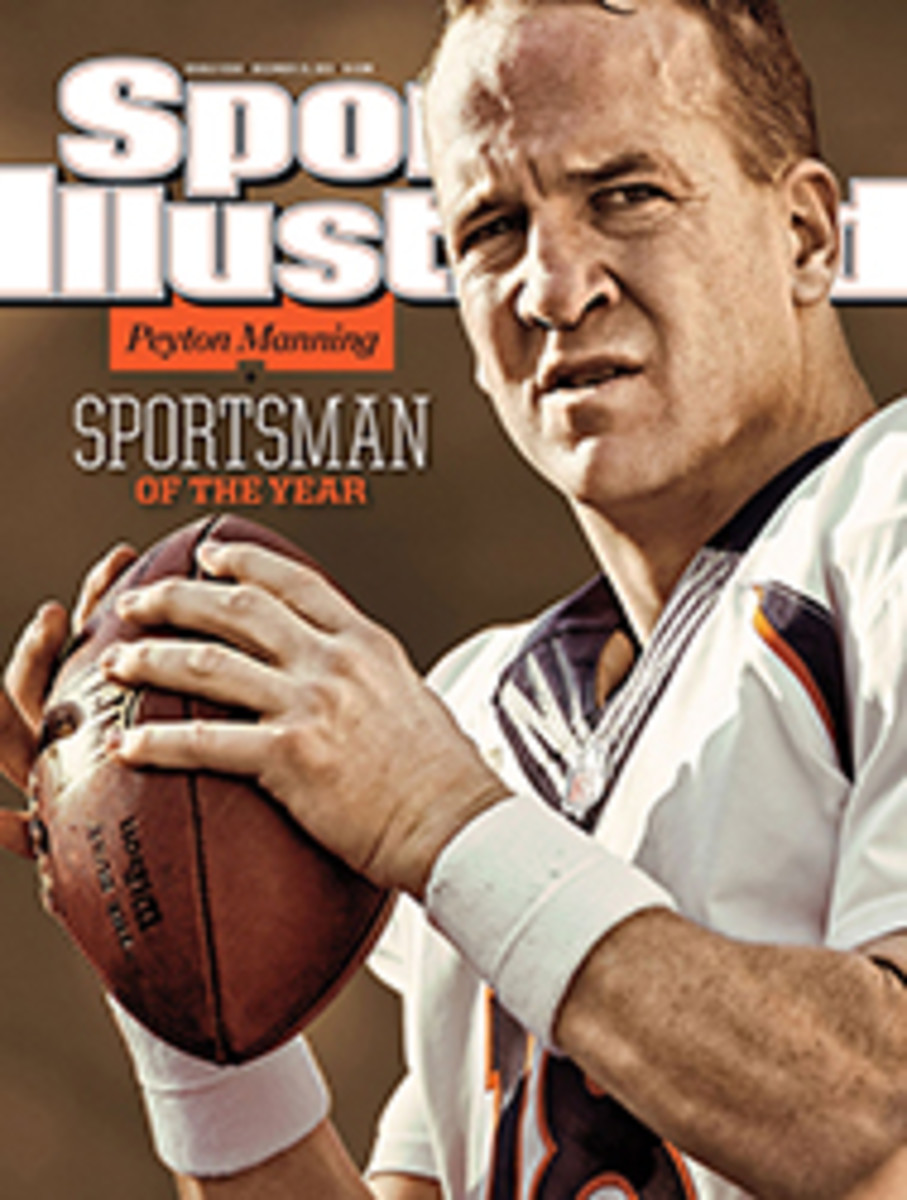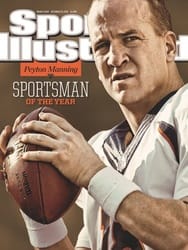
Learning to Fly
IT WAS FORMULA ONE on the water. Gone were the elegant, mahogany-railed monohulls of the America's Cups of Newport, cruising hours-long courses at 10 knots, miles offshore. The 2013 America's Cup featured 72-foot catamarans with wing sails 13 stories tall, seven tons of carbon fiber gliding on knife-thin hydrofoils at more than 40 knots on a course bordered by Alcatraz and San Francisco's waterfront.
Larry Ellison, the billionaire founder of the software company Oracle—and the defending America's Cup champion—had chosen the venue and the style of boat, spending an estimated $300 million in his bid to repeat. But on Sept. 19, Oracle Team USA was down 8--1 to challenger Emirates Team New Zealand, one race from elimination in the best-of-17 series.
Yet Oracle skipper Jimmy Spithill never lost his swagger. "The boat that starts the fastest is not the one that necessarily wins," he says. Spithill proved just that, taking eight straight races to mount one of the most improbable comebacks in sports history.
Ellison was less prescient than his skipper. It was estimated that the series would bring $1.4 billion and 9,000 jobs to San Francisco. And by keeping the races close to shore and televising them, Ellison hoped to lift the America's Cup, first contested in 1851, into the Facebook era. But only three boats—New Zealand's entry, Sweden's Artemis and Italy's Luna Rossa—had entered the Louis Vuitton Cup, the races that determine the challenger, largely because of the exorbitant cost of developing a team. Some round-robins featured only one boat—such "races" tend to lack suspense. "The early rounds were terrible," says Team USA's chief executive and four-time America's Cup winner, Russell Coutts.
In a practice run in San Francisco Bay on May 9, Artemis was bearing away, a risky, 180-degree turn downwind, when the stern of the boat reared up. A beam connecting the hulls broke, one side of the catamaran tore away from the other and the boat crumbled into the water.
Chase boats were dispatched immediately, but Andrew (Bart) Simpson, a 36-year-old sailor who had medaled in the 2008 and '12 Olympics for Great Britain, and whose shock of reddish brown hair and sense of humor had earned him his cartoonish nickname, was trapped underwater for close to 10 minutes. A coroner's report released in October concluded he died of "blunt trauma with drowning." Says Coutts, "These boats are totally capable of getting out of control at any moment."
Then on Sept. 3, four days before the America's Cup began, Oracle was found guilty of having made illegal changes to the boats it had used in the America's Cup World Series of 2011--12. The team was fined $250,000, and three of its sailors were banned from participating in the regatta. Oracle was also docked two races, meaning it would have to win 11 races, the Kiwis nine. That Saturday, New Zealand won the first race by 36 seconds, the second by 52. One day of competition, and Oracle was already down 4--0.
In those first few races New Zealand skipper Dean Barker and his team zipped through the water, rounding marks with ease. Oracle looked clunky, and Spithill and his crew seemed less sure of themselves when foiling (when the hulls lift above the surface). The team was rusty. "That's the downside of being the defender," says Spithill. "It's like last year's Super Bowl champion playing no games until this year's Super Bowl."
New Zealand had learned to foil during the qualifying races, says Oracle designer Ian Burns. "Their boat was easier to learn on. I use the analogy that they built an SUV, while we built a Ferrari and were still learning to drive it."
The Oracle crew was tweaking the boat each night after it was brought out of the water, changing the angles of the wing mast, responding to wind conditions and adjusting the boat so that it would be faster on starboard tack than on port. On the water, they learned how to better alter the foils. They also changed personnel, replacing one tactician with another.
Despite his team's lead, Barker, 41, would appear at postrace press conferences looking as if he'd rather be on the water, while Spithill, a 34-year-old Australian, seemed to relish questions, even as he lost race after race.
Known for his aggressive tactics, Spithill would announce dramatic changes to his boat just to watch Barker squirm. Says Coutts, "Dean Barker, after the score was 8--3, I think, they asked him, 'What happens if you don't win tomorrow, what changes are you going to make?' 'We're not going to make any changes,' he said. 'If we don't win tomorrow, we've got the next day.' I thought, This is Game on. If he thinks it's O.K. to lose tomorrow, they're going to lose tomorrow."
On Sept. 20, with one more victory needed to take the Cup back to Auckland, the Kiwis had pulled ahead of Team USA by 500 meters, then 650, then 1,500. But one of this Cup's new rules stated that if neither boat crossed the finish line within 40 minutes of the start, the race would be declared null and void. With Team New Zealand about three minutes from the finish line, time was called.
Though the Kiwis were still ahead 8--2, that race was the turning point. With each leg of each ensuing race, Oracle appeared lighter and more agile on its foils, while New Zealand seemed unable to make its boat go faster. Oracle crossed the finish line of the 19th race 44 seconds ahead of the Kiwis to win the 34th America's Cup, on Sept. 25. Three thousand miles away, John Key, the prime minister of New Zealand, in New York City for the U.N. general assembly, summed up his sailing-mad country's disappointment with a succinct tweet: "Bugger."
"The [Kiwis'] boat was easier to learn on," says Burns. "They built an SUV, while we built a Ferrari."
PHOTO
Photograph by MONICA M. DAVEY/EPA
BREEZING THROUGH THE BAY Though support from San Franciscans was minimal at the start of the series, thousands turned out to witness Oracle's final win.
PHOTO
IMAGO/ZUMAPRESS.COM
TROPHY LIFE Spithill overcame an 8--1 deficit with aggressive tactics that included personnel changes and nightly tweaks to the boat's design. The result was his second straight America's Cup victory.

